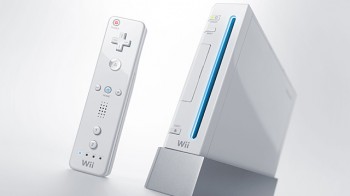 In a recent interview, Nintendo game designer Yoshio Sakamoto mysteriously hints that “the new Nintendo machine will leave you all with your mouth open.” He then goes on to aptly sum up Nintendo’s long-time philosophy behind console design, hinting that the Wii’s successor will similarly innovate and revolutionize the market (no word yet on whether it will have a feature for printing money, a la the Wii and DS):
In a recent interview, Nintendo game designer Yoshio Sakamoto mysteriously hints that “the new Nintendo machine will leave you all with your mouth open.” He then goes on to aptly sum up Nintendo’s long-time philosophy behind console design, hinting that the Wii’s successor will similarly innovate and revolutionize the market (no word yet on whether it will have a feature for printing money, a la the Wii and DS):
“At Nintendo we always have the obligation to surprise users with a new game console. We have never done what others have. We prefer to create something new that catches attention, and I think this will continue this time as well.”
Indeed, with the possible exception of the GameCube, Nintendo has cemented new industry standards with each major console release, which were widely adopted and embellished upon by competitors with their own respective consoles. The NES brought us the classic staple of controllers everywhere: the D-pad. The SNES introduced shoulder buttons. The N64 gave us the analog stick, rumble functionality, and the trigger button. The GameCube was a comfy evolution of the N64 controller featuring analog shoulder buttons and two analog sticks, but these features didn’t represent a giant leap forward allowing for new possibilities of gameplay, as the other controllers did. Then came the Wii — a console that turned the industry on its head, captivating our imaginations with a remote and nunchuk attachment featuring accelerometer and pointer capability. I remember being completely stupefied the first time I saw the Wii remote. How would it be used? Could it really advance gaming and allow for entirely unique control experiences? Four years later, I think it’s safe to say that Nintendo’s gamble on the blue ocean strategy paid off big time.
It seems to me that the undertone of Sakamoto’s statement is that Nintendo innovates while others imitate. Looking back at the past few iterations of the console wars, it is difficult to argue otherwise, as Sega, Sony, and Microsoft’s offerings were often noticeably derivative from whatever Nintendo had created before them. Even with the release of the Move and Kinect, Sony and Microsoft are tweaking a successful Nintendo strategy (this time, motion control) and running with it. Some would go so far as to characterize these imitations as shameless rip-offs. Granted, Sony combined the PS2 with a DVD player, and Xbox made online gaming a standard with Xbox Live, but outside of these major contributions, what have they done to drastically enhance the gaming experience or create brand new styles of playing? The shift towards motion control by Sony and Microsoft does not symbolize another giant leap forward for the industry; it’s just another confirmation that the dramatic changes and impressive sales figures brought about by the Wii truly rocked the boat, and now everyone else is ready to jump on board. And if the 3DS is any indication, Nintendo aims to deliver some exciting, unique ideas which amount to more than just a glorified facelift.
In any case, I anxiously await the details about how Nintendo intends to revolutionize the gaming industry again, and also how quickly Sony and Microsoft will go from mocking and decrying Nintendo’s latest convention-bending concept to frantically hammering out their own mature and X-TREME variations. Promises of innovation are wonderful, but those who know their gaming history should be well aware that ultimately, it’s not about gimmicks or graphics, because even the most technologically impressive and forward-thinking ideas in the world mean nothing without some solid games as proof of concept to drop them panties.
